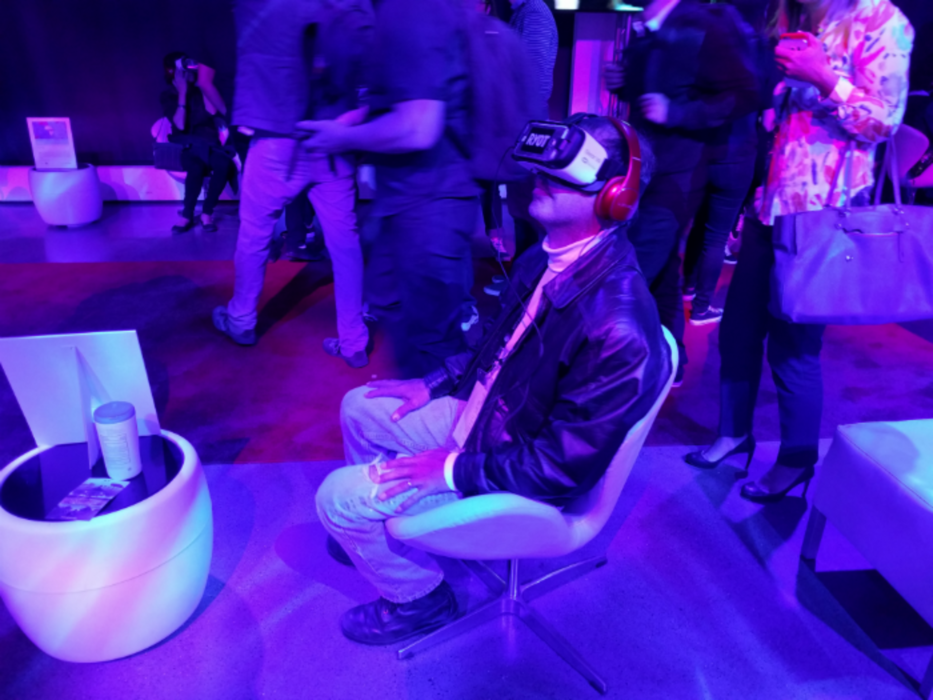Though it’s been an existing (if stagnant) segment of the gaming technology market for many years now, virtual reality (VR) is on track to become the biggest trend in consumer media this side of the smartphone. If this was ever in question before, the forthcoming onslaught of VR products should dispel any and all doubt.
Ever since Facebook acquired Oculus VR in 2014, VR coming to the masses has been a question of when, not if. And where the masses go, so go marketers.
However, early adoption of VR tech may not be the most viable approach for many businesses, despite the wide range of VR products hitting the market in the latter half of 2016.
Microsoft, Samsung, Sony, and a host of others are slated to drop VR products throughout the year—not to mention the recent release of the Oculus Rift, or existing DIY virtual reality solutions from the likes of Google, and even McDonalds. Virtual reality maintained a prominent and consistent presence at the Tribeca Film Festival this year, with a whole floor at the festival hub dedicated to shorts and experimental stories told through VR. By this time next year, there will be a venerable mine of shiny, new VR platforms and products for innovative marketers to experiment with. The question is whether they should.
Empirically speaking, there’s a sense that marketers have been stuck in a loop where they cannot keep pace with consumers, particularly when it comes to digital media and mobile technology. The internet democratized almost everything, while the smartphone revolutionized everything else, and businesses were caught nearly flat footed by both. Naturally, pressure exists for marketers to prevent or curb such radical shifts. VR—like so many new social platforms, or startups solutions—presents yet another opportunity for marketers to get ahead of the curve. Also, VR is exciting and novel in its own right. But this novelty is exactly why brands should fall all the way back on virtual reality. Additional things to consider:
The cost of entry
The Oculus Rift retails from $600 and up, and also requires a gaming PC with powerful graphic processing and computing capabilities to even get started. It will be difficult, if at all possible, for general consumers to buy in to the Oculus Rift for less than $1,000. Sony’s Playstation VR, also known as Project Morpheus, will run $400, not including the price of a Playstation 4, which is required. As it stands, Playstation VR is among the cheapest high end VR options.
While gamers are somewhat less turned off by these price points (Sony’s Playstation 4 has sold more than 30 million units to date), these are fairly prohibitive costs for many consumers, and these costs will ostensibly be reflected on the developmental side for marketers. For brands in the gaming space, these costs may be worth it. For others, those marketers will need to fully assess whether a one-off virtual reality experience will prove attractive to their audience, and whether it’s fiscally responsible to develop such an experience.
Novelty, and sanitization
Businesses bring valuable ad dollars in tow whenever they venture into a market. However, they also bring with them a bevy of bureaucracy, lawyers, and compliance issues that inadvertently stifle creativity among the much more guerilla consumer base.
Your ideas will likely fall flat
The first sensations in any new medium tend to come from independent auteurs, or pretty much anyone else who does not have a marketing message. Consumers understand that brands will infiltrate their shiny new toys, but want the initial experience to be as untainted by commercialism as possible.
Plus, if you wait until the right moment, you can see where others fail, and better understand the mores that users have established for VR.
Other interactive video formats
This piece is not a justification for conservative marketers’ idle behavior in new media; merely a call for restraint.
While consumers and developers work out the kinks of VR, brands have miles of ground to cover in more established video formats like augmented reality (AR), 360 degree video, and live streaming. Each of these represent another tool in the interactive video arms race, but they’ve also been on the market and in consumers’ hands for much longer.
Home improvement and decor brands are making heavy use AR of late, and YouTube has grown to a destination for 360 degree video. Early in the marketing campaign for the forthcoming “Warcraft” film, Legendary, the studio behind the movie, released a 360 degree video of one of the film’s cities.
Like VR, there are many possibilities for innovative marketing in these interactive video formats. Unlike VR, formats like augmented reality and 360 degree video are far more accessible to general audiences, and are likely much more cost effective.







